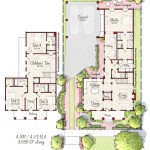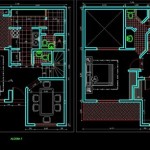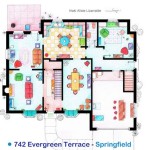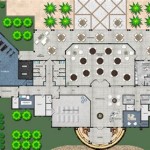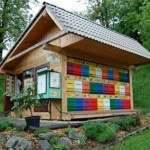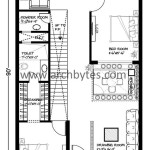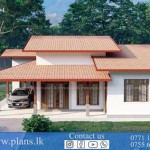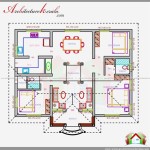Canadian Bungalow House Plans: A Comprehensive Overview
The Canadian Bungalow, a distinct architectural style, enjoys enduring popularity for its practicality, affordability, and aesthetic appeal. Rooted in the early 20th century Arts and Crafts movement, it emphasizes simplicity, connection to nature, and efficient use of space. This article provides a detailed examination of Canadian Bungalow house plans, covering their key characteristics, variations, and considerations for modern adaptations.
The term "bungalow" itself has origins in India, referring to a low, one-story dwelling. However, the Canadian Bungalow developed its own unique features, adapting to the Canadian climate and incorporating local materials. These homes are often characterized by their horizontal emphasis, low-pitched roofs, and generous porches, making them well-suited to both urban and rural settings.
Understanding the specific elements of a Canadian Bungalow house plan is crucial for anyone considering building, renovating, or simply appreciating this architectural style. The following sections explore the common features and variations that define this iconic Canadian home.
Key Characteristics of Canadian Bungalow House Plans
Several defining characteristics distinguish the Canadian Bungalow from other architectural styles. These features contribute to its distinct appearance and functionality. Identifying these elements is essential for recognizing and appreciating the design principles behind these homes.
Low-Pitched Roofs and Wide Eaves: A hallmark of the Canadian Bungalow is its low-pitched roof, often featuring a gable or hipped design. The wide eaves extend beyond the walls, providing shade and protecting the exterior from the elements. This feature is particularly beneficial in regions with heavy snowfall or rainfall, as it helps to divert water away from the foundation.
Prominent Front Porch: The front porch is an integral part of the Canadian Bungalow. Often covered and supported by substantial columns or pillars, the porch serves as an outdoor living space and a welcoming feature. It encourages interaction with the street and provides a transition zone between the indoors and outdoors. The porch may extend across the entire front of the house or be a smaller, more intimate space.
Horizontal Emphasis: Bungalows are designed to appear grounded and close to the earth. This is achieved through long, horizontal lines in the roofline, the porch, and the overall structure. This horizontal emphasis contributes to the bungalow's sense of stability and tranquility.
Simple Floor Plans: Canadian Bungalows typically feature simple, open floor plans that maximize the use of space. Common areas, such as the living room and dining room, are often connected, creating a sense of flow and openness. Bedrooms are usually located off a central hallway, providing privacy and separation from the living areas. The emphasis is on functionality and efficient use of space.
Natural Materials: The use of natural materials is another defining characteristic of the Canadian Bungalow. Wood, stone, and brick are commonly used for both the exterior and interior of the house. These materials contribute to the bungalow's warm and inviting atmosphere and connect it to the surrounding landscape. Wood siding, shingle roofs, and stone foundations are typical features.
Large Windows: Bungalows often incorporate large windows to maximize natural light. These windows are typically double-hung or casement style and may be grouped together to create a larger visual impact. The abundance of natural light contributes to the bungalow's airy and comfortable feel. The placement of windows is carefully considered to provide optimal light and ventilation.
Variations within Canadian Bungalow House Plans
While the core characteristics of the Canadian Bungalow remain consistent, variations exist within the style. These variations reflect regional differences, individual preferences, and adaptations to changing lifestyles. Understanding these variations allows for a more nuanced appreciation of the Canadian Bungalow.
California Bungalow Influence: The California Bungalow, with its emphasis on light and open spaces, had a significant influence on the Canadian Bungalow. Some Canadian Bungalows incorporate features such as large picture windows, built-in cabinetry, and a more streamlined aesthetic. This influence is particularly noticeable in western Canada.
Prairie Style Bungalow: The Prairie School of architecture, developed by Frank Lloyd Wright and his followers, also influenced the Canadian Bungalow. Prairie Style Bungalows are characterized by their low-pitched roofs, overhanging eaves, horizontal lines, and bands of windows. These bungalows often feature more elaborate ornamentation and a more formal layout.
Craftsman Bungalow: The Craftsman style, closely related to the Arts and Crafts movement, is a common variation of the Canadian Bungalow. Craftsman Bungalows emphasize handcrafted details, such as exposed rafters, decorative brackets, and intricate woodwork. These bungalows often feature a more rustic and natural aesthetic.
Raised Bungalow: In areas with high water tables or the potential for flooding, raised bungalows are a common adaptation. These bungalows are built on a raised foundation, providing additional living space in the basement. The raised foundation also helps to protect the house from moisture damage.
Bungalow with Dormers: To increase the usable space on the second floor, some bungalows incorporate dormers into the roof. Dormers are windows that project from the roof, providing additional light and headroom. This variation is particularly common in areas where maximizing living space is important.
Considerations for Modern Adaptations of Canadian Bungalow House Plans
Adapting a Canadian Bungalow house plan for modern living requires careful consideration of both the historical integrity of the style and the needs of contemporary homeowners. Balancing these two factors is essential for creating a comfortable and functional living space.
Preserving Original Features: When renovating or remodeling a Canadian Bungalow, it is important to preserve as many original features as possible. These features, such as original woodwork, built-in cabinetry, and period-appropriate hardware, contribute to the character and charm of the house. Restoring these features can enhance the value and appeal of the home.
Updating Kitchens and Bathrooms: Kitchens and bathrooms are often the first areas to be updated in a bungalow. Modern kitchens often incorporate open layouts, updated appliances, and improved storage solutions. Bathrooms may be expanded to include features such as walk-in showers and double vanities. It is important to maintain the overall aesthetic of the bungalow when updating these spaces.
Improving Energy Efficiency: Many older bungalows lack adequate insulation and energy-efficient windows. Upgrading these features can significantly reduce energy consumption and improve the comfort of the home. Installing new windows, adding insulation to the walls and attic, and upgrading the heating and cooling systems are all important considerations.
Adding Living Space: If additional living space is needed, consider adding an addition to the rear of the house. This can be done while maintaining the original footprint and preserving the character of the front facade. Alternatively, finishing the basement or attic can provide additional living space without altering the exterior of the house.
Landscaping Considerations: The landscaping surrounding a Canadian Bungalow should complement the architectural style. Naturalistic plantings, such as native trees, shrubs, and flowers, are a good choice. A well-maintained lawn, a stone walkway, and a welcoming front porch can enhance the curb appeal of the house.
Maintaining the Scale and Proportion: When adding to or altering a Canadian Bungalow, it is important to maintain the original scale and proportion of the house. Avoid adding additions that are too large or out of character with the original design. This will help to preserve the integrity and appeal of the bungalow.
Careful planning and execution are essential for adapting a Canadian Bungalow house plan to meet the needs of modern living while preserving its historical character and charm. By understanding the key characteristics, variations, and considerations outlined in this article, homeowners can ensure that their bungalow remains a comfortable, functional, and beautiful home for years to come.

Custom House Plans Stock Garage Home Small Free

Canadian Home Designs Custom House Plans Stock Garage Bungalow Plan Gallery Floor

Top 100 Most Popular Canadian House Plans Drummond

Bungalow House Plans We Love Blog Homeplans Com

Pin On House Custom Floor Plans Bungalow

1200 Sq Ft Bungalow House Plan 1172

50 Favorite Alberta House Plans Prairie And Ranch

Canadian House Plans Home Floor Designs The Designers

Canadian House Plans Edesignsplans Ca

Efficient Passive House Plan 3 Bedroom Modern Home Plans

